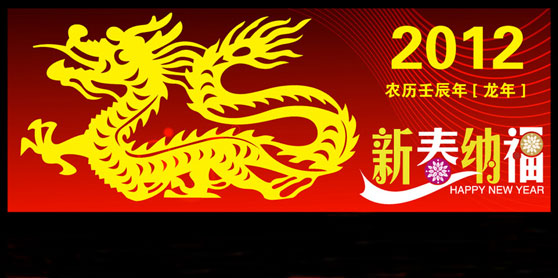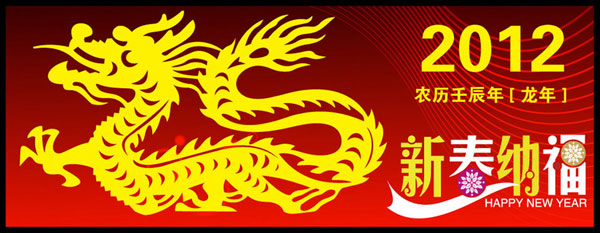Top 10 things to do during Chinese Spring Festival
- By Wang Zhiyong
 0 Comment(s)
0 Comment(s) Print
Print E-mail China.org.cn, January 30, 2012
E-mail China.org.cn, January 30, 2012
The Spring Festival, also known as Chinese New Year, is the most important festival for people in China and other neighboring countries, comparable to Christmas in the West. Family members try every means to get together before the Spring Festival Eve for the celebrations. The festival starts on the first day of the first lunar month – often one month later than the start of the year on the Gregorian calendar – and ends with Lantern Festival on the 15th day of the first lunar month. The Chinese New Year 2014 starts in January 30 (Chinese New Year' Eve). It is the year of horse. China.org.cn gives you a list of 10 most popular activities still prevalent today for the Chinese people to do during the Spring Festival.
|
|
|
The Chinese New Year 2014 starts in January 30 (Chinese New Year' Eve). It is the year of horse. [China.org.cn] |
1. Laba porridge
On the eighth day of the 12th lunar month, many families make laba porridge, a delicious porridge made with glutinous rice, millet, seeds of Job's tears, jujube berries, lotus seeds, beans, longan and gingko. Boiling Laba porridge is one way people celebrate the harvest and show appreciation by sacrificing to the ancestors and heaven and earth.
2. Cleaning and decoration
Before the Lunar New Year comes, it is a tradition for every Chinese family to thoroughly cleanse the house as well as their clothes, bedclothes and all their utensils in order to sweep away any ill-fortune and to make way for good incoming luck. People also get debts paid or repaid, hair cut and new clothes sewn or purchased as preparation. Windows and doors will be decorated with red color paper-cuts and couplets with popular themes of good fortune, happiness, wealth and longevity.
3. Eating Jiaozi
People in northern China will eat jiaozi, or dumplings, for supper on the Spring Festival Eve, as "jiaozi" is homophonous to the word phrase “to bid farewell to the old and usher in the new.” Also, the shape of the dumpling resembles gold ingot from ancient China. So people eat them and wish for money and treasures. Meanwhile, people in southern China eat niangao (New Year cake made of glutinous rice flour) on this occasion, because as a homophone, niangao means "higher and higher, one year after another."
4. Watching gala shows on TV
After two decades of practice, watching the Spring Festival gala has become an essential entertainment activity for the Chinese both at home and abroad. Most families will stay up to see off the old year and welcome the New Year with their TV turned on. Now, there are 51 galas broadcasted by local television networks throughout China in 2012. Because of varying tastes, the gala shows are often a favored background noise while people in front of their TV enjoy other family activities.
5. Exchanging gifts
After extending greetings to their parents, children will receive money as a New Year gift in red envelopes. In most cases, these hongbao are given to children by their elder relatives or friends of the family.
6. Fireworks
Setting off firecrackers and fireworks has been the most practiced custom during the Spring Festival. People thinks the spluttering sound could help drive away evil spirits. Once in the mid-1990s, the government took safety, noise and pollution factors into consideration and banned fireworks in major cities. Now, however, almost all cities have lifted the ban to give way for such a long-held tradition.
7. Greetings
Waking up on the first day of the Lunar New Year, everybody dresses up. First they extend greetings to their parents and then to their grandparents and other relatives, neighbors and friends.
8. Friends gathering
The first five days after the Spring Festival are a good time for relatives, friends, classmates and colleagues to exchange greetings, gifts and chat leisurely. Friends meet together to share what have happened in their lives during the past year, talk about their plans for the coming year, and otherwise enjoy their time together.
9. Drinking
There is a Chinese saying that “a thousand cups of wine is not too much when bosom friends meet together,” emphasizing the strong bond of friendship. The Spring Festival is a favorite time for family reunions and gathering of friends and classmates, and it is probably one of the most significant occasions for social drinking. However, please be careful not to drink and drive!
10. Gambling
Most families play card games or mahjong for fun over the Spring Festival. A small sum of bet is usually placed to add excitement. Playing mahjong or poker is not only for entertainment, but also a ritual for cathartic release traditionally at the social gathering of peasants, completing the leisure activities during the holiday break.








Go to Forum >>0 Comment(s)